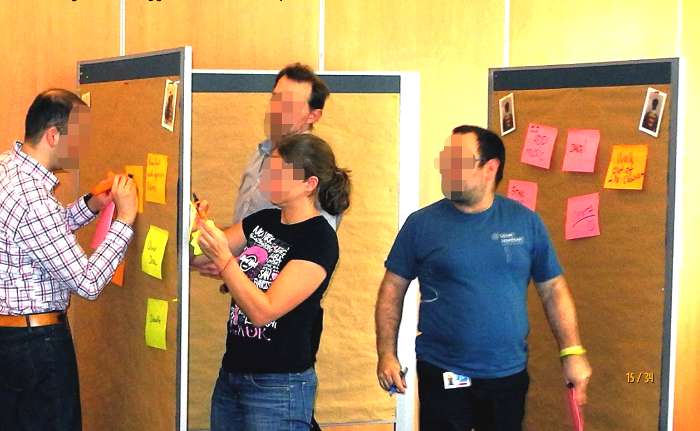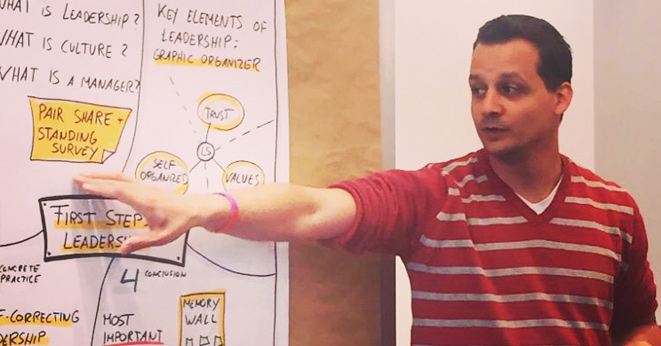Know what’s harder than running great Coaching Sessions?
Making them unforgettable!
That’s exactly what’s needed if you’re serious about Quality Coaching and Teaching! In this blog post I want to answer a very simple question:
What quick and applicable Secrets can help you instantly of moving your next Training from average to unforgettable?
Therefore I asked some Scrum Masters and Coaches in my network to share the coolest and fastest ways to increase the quality of any kind of instruction. I’ve assembled a very small list of the best ideas that you can apply in different occassions like Retrospectives, Workshops or Plannings. Below you’ll find 3 refreshingly original ways that help you run an unforgettable Coaching Session. Let’s jump in!
Being a Coach is hard work
As a Coach, you’re in the business of Entertainment. You have to consistently come up with new ideas and turn those into practical design and delivery Tools that dazzle your participants. And you want to keep those participants happy and engaged, so you work your butt off to prepare workshops on a regular basis.
But don’t worry, the more you’re Coaching the more ideas you will collect in your treasure trove. Below, you’ll find some ways to do just that. Here are 3 quick tips to produce great Coaching; I bet they’ll speed up your output as well. Here we go …
1. The Gallery Walk
The Gallery Walk is a practical and powerful opening activity that engage participtants to move, talk and write. You can use this tool for various purposes like connecting people, gathering a huge amount of information in a very short time or you can use it to help your participants to focus on what they already know. As soon as you experiment the Gallery Walk the very first time you will notice that this technique is absolutely multi functional.
How it works: Before participants enter the training room, set up various pieces of chart paper. You can simply tape them on the room wall or on any other flat surface. Now you can design the chart pages with content-related questions to answer, concepts, short stories or some interesting facts. As soon as the participants enter the room, announce the purpose for the activity and give them the instruction to take the “Gallery Walk” by moving from chart to chart. They start reading and observing all the information. Let them know that they can use Post-It’s to provide further information on the walls. They can add questions, additional information, experiences or simple comments:

The Gallery Walk In Action
After the writing is over, give the participants the time to walk around in order to read and observe all the new information that was created by the group. After that, tell the learners to return to their seats and let them discuss about what they have observed. If you have more than 5 participants it makes sense to create table groups. Then, each group creates a brief summary of the walk and present it after the activity.
This will give you a lot of very interesting insights about existing knowledge, personalities and open questions. The learner-created information will show you how to adapt your training in order to meet the needs of your group. The outcome might be surprising for you, but it will dramatically increase the quality of your next coaching steps!
Related: Top 15 Books About Agile & Coaching
2. Rapid Reflection
Rapid Reflection is a “Think and Write” – Activity where participants can reflect about what they’ve learned so far. This relaxing technique will deepen the individual understanding of your training material. It’s very easy to apply and it takes only a few minutes. I personally use it often after a coffee break.
How it works: As a Coach you should constantly re-check if your participants are still on track or if you’ve already lost them on the road. In order to avoid that, you should run the Rapid Reflection after a few hours in order to check if you’ve done your job well so far. Tell the people to take a moment to think about what they’ve learned so far and then write down their thoughts. That could be only one sentence that summarizes the main idea, or a detailed list on what they remember. There is no specific pattern they need to follow, it’s more a free-writing than a test. They can scratch, write or paint. This activity can be heavily modified. Instead of sitting and writing, you can also transform it into a standing activity where people have to draw instead of writing. This might boost creativity and it’s even more relaxing. The way how you run it depends on your participants. You need to find out which way is more suitable.
After everybody finished writing down their thoughts, you can simply continue with your next Coaching Activity. It’s not necessary to share the learning of the participants. Sure, you could run another 10 minutes to share everybody’s learnings, but the main idea of Rapid Reflection is more to relax, internalize and move information into long-term memory.
What I’ve experienced is that after this method, people generate new questions. This is awesome because it will give you a clear panorama on what is still unclear. Use this information and add it into your next working step. That’s how you make your training stick!
| 1 | Training From the Back of the Room!: 65 Ways to Step Aside and Let Them Learn |
Sharon L. Bowman
|
| 2 | Gamestorming: A Playbook for Innovators, Rulebreakers, and Changemakers |
Dave Gray
|
| 3 | Workout: Games, Tools & Practices to Engage People, Improve Work, and Delight Clients (Management 3.0) |
Jurgen Appelo
|
3. Pair Share
The last method I want to show is Pair Share. It’s also very easy and can be applied within 10-15 minutes. It’s a listen and talk activity where participants discuss in Two-Groups topic related information. I loved this technique because it will engage even introvert and shy people to become active.
How it works: Each participants turns to another person and starts dialoguing. They can review on what they’ve learned or discussing about what they found surprising in the Training. It’s a 1-on-1 session where even shy and introvert people can speak freely without worrying about speaking in front of an audience. The only person they speak to is the person seated next to them. Together they can share experiences about the topic. This method helps people to get more confident and comfortable in the group. That’s great for you as a Coach because this will lead to more involvement in your next Coaching Step.
This activity can be modified as well. You can convert it into a standing or walking session. Feel free to adapt this activity to meet the needs of your group.
I learned most of those tips in a training from Sharon L. Bowman. Her book “Training from the Back of the Room” is one of my favorite train-the-trainer resource of Scrum and Agile Coaches. It contains a wealth of powerful tools for any kind of instruction. I would not recommend the tools if I had not tried it myself!
Do you like the tools? Want more of it? Just drop a comment below and let me know if you need more useful activites!
I would appreciate a star-rating:



Good tips and good read! Thanks